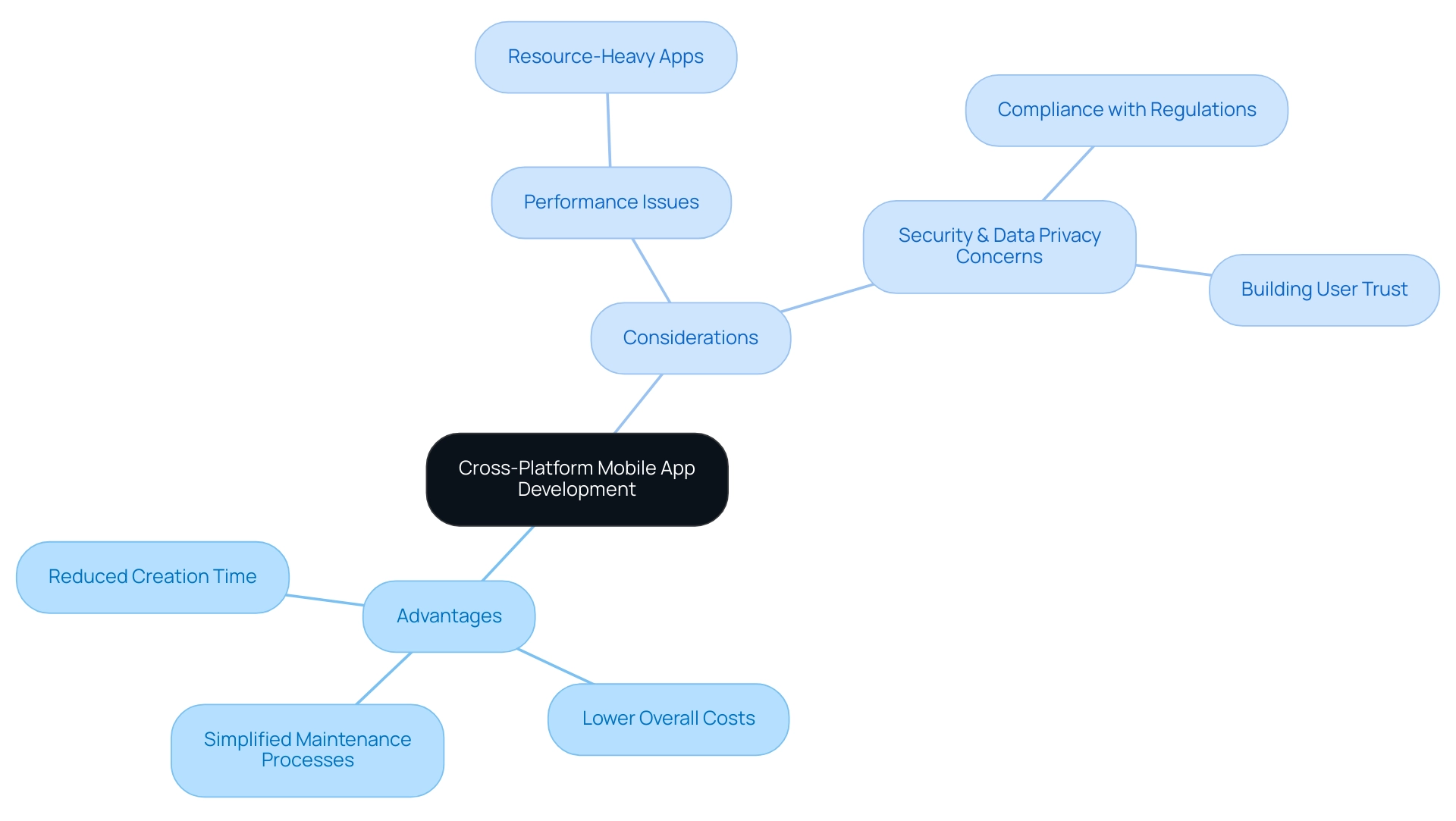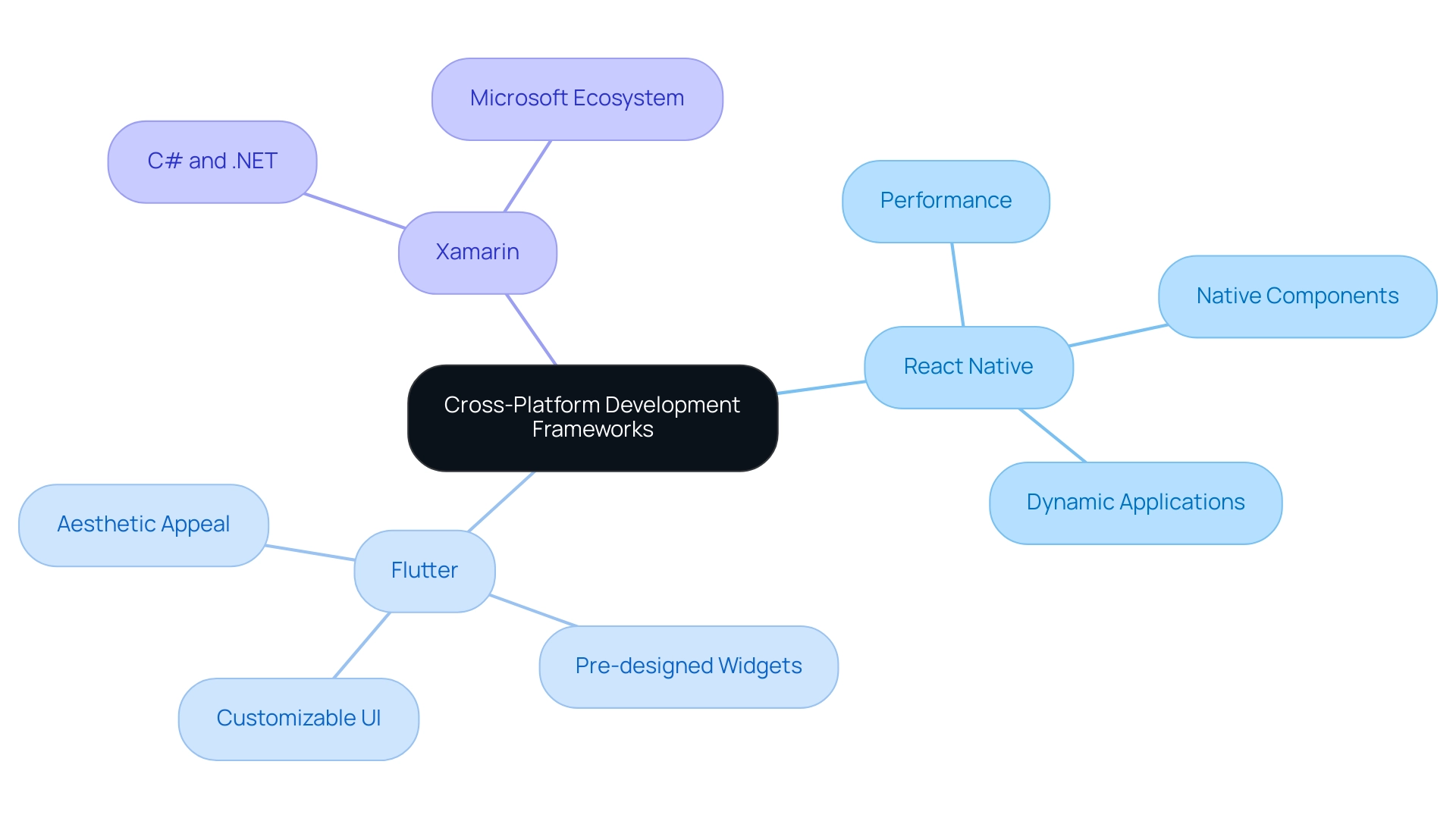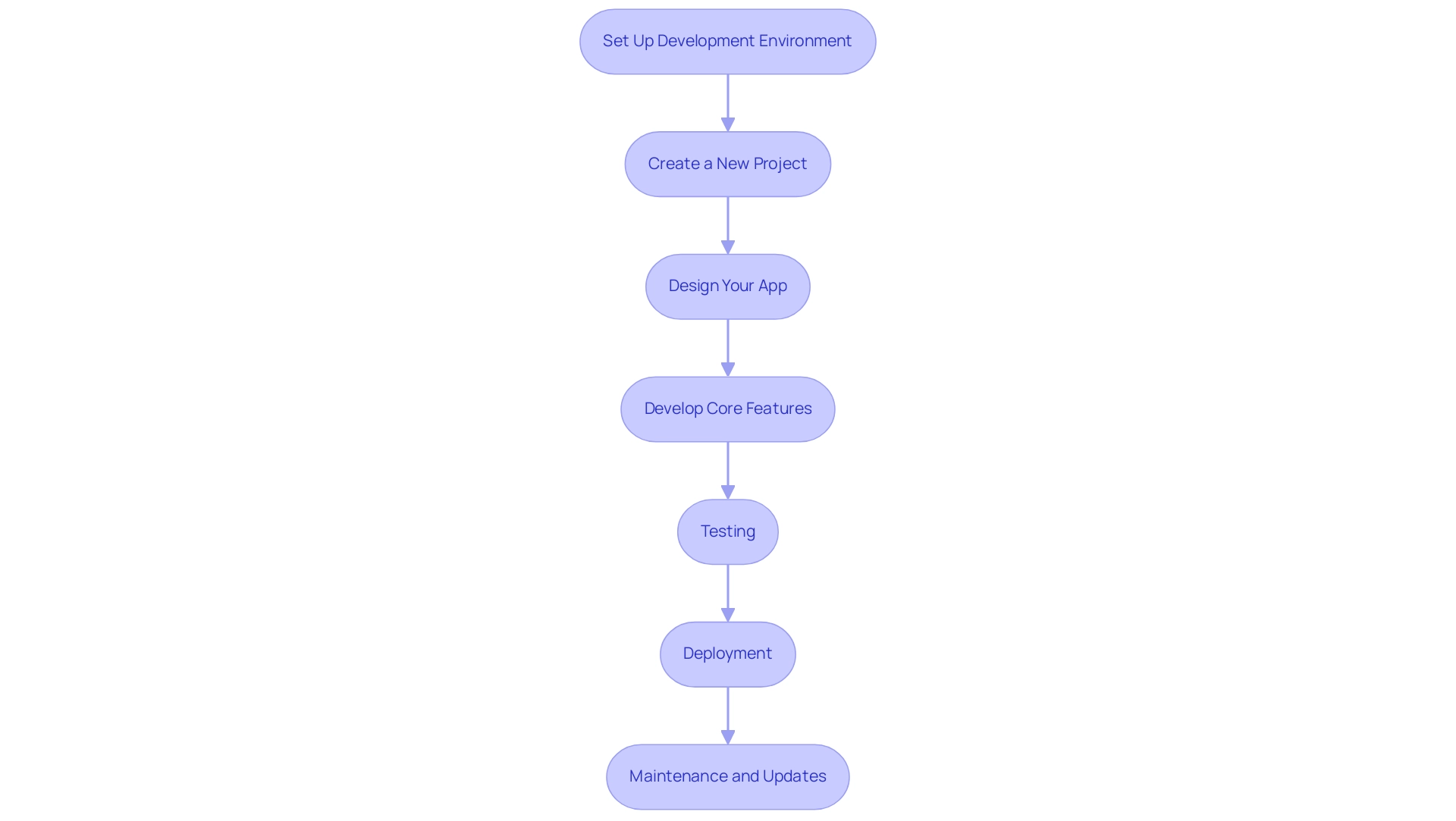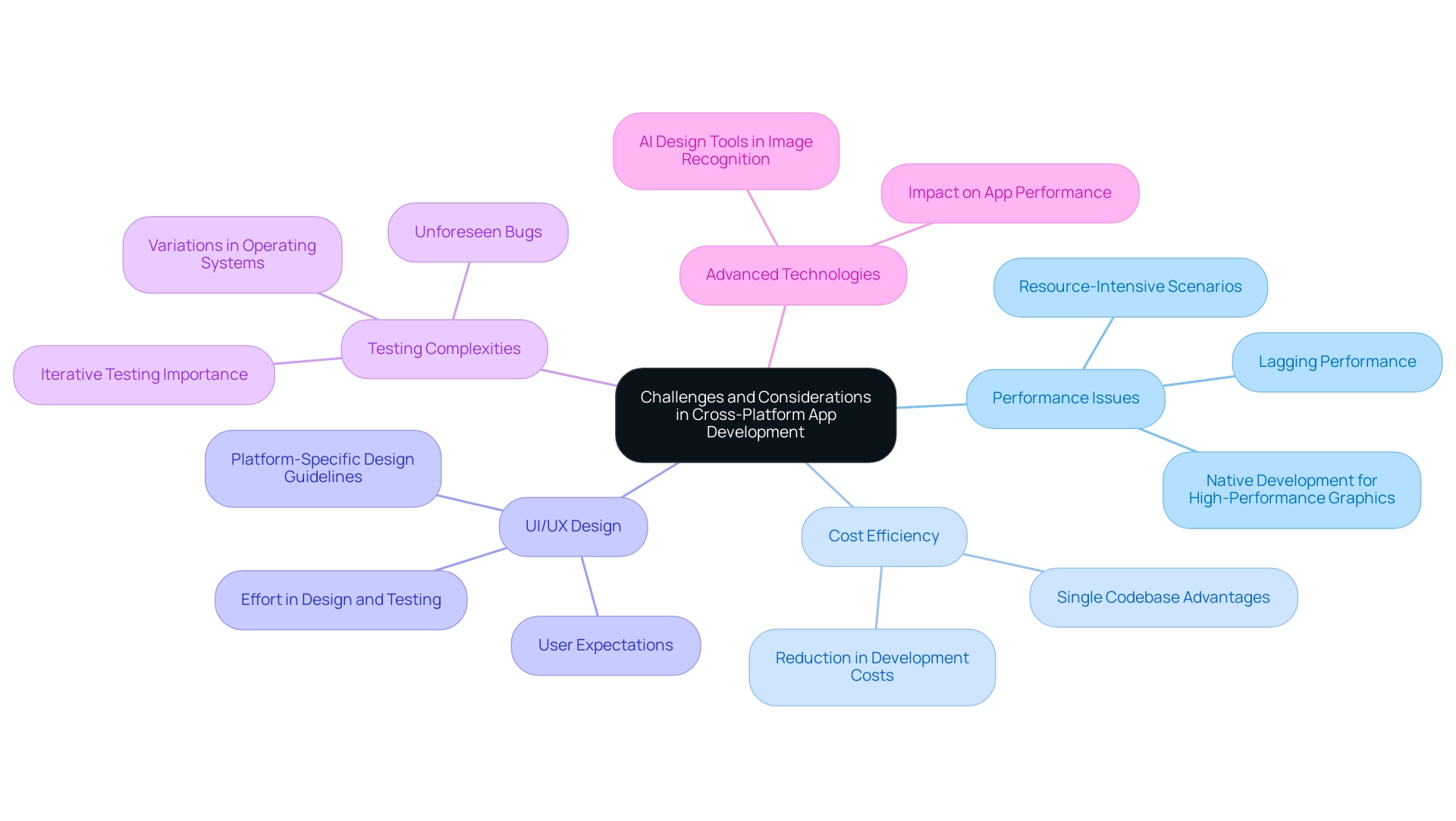Introduction
As the demand for mobile applications continues to surge, businesses are increasingly turning to cross-platform development as a strategic solution to reach diverse audiences. By leveraging a single codebase to create apps that function seamlessly on both iOS and Android, organizations can not only save time and resources but also enhance their digital presence in a competitive market.
However, navigating the complexities of cross-platform frameworks requires a deep understanding of the available technologies, design principles, and potential challenges. This article delves into the essential aspects of cross-platform mobile app development, from exploring popular frameworks to providing a step-by-step guide for building robust applications, ultimately equipping developers and businesses with the knowledge needed to thrive in this evolving landscape.
Understanding Cross-Platform Mobile App Development
Building cross platform mobile apps involves crafting applications that operate smoothly across different operating systems, such as iOS and Android, utilizing a single codebase. This methodology is gaining traction among developers for building cross platform mobile apps, primarily due to its cost-effectiveness and efficiency. For instance, successful applications like Alaska Airlines and Olo exemplify how businesses can effectively engage a broader audience without the necessity of developing separate apps for each platform.
With the United States being the second largest market for food delivery, boasting a market size of $26.5 billion in 2022, understanding the nuances of building cross platform mobile apps is crucial for businesses striving to enhance their digital footprint. Key advantages of building cross platform mobile apps include:
- Reduced creation time
- Lower overall costs
- Simplified maintenance processes
However, it's essential to consider that performance might not be as strong as that of more native-focused solutions, especially for resource-heavy apps, as noted by Memory.
Additionally, as mobile apps increasingly handle sensitive transactions, security and data privacy have become critical concerns for e-commerce businesses. Developers who understand these issues can build trust with users and ensure compliance with regulations. These factors make building cross platform mobile apps a clever strategic option for e-commerce companies seeking to enhance their reach and functionality across various devices.

Exploring Popular Frameworks for Cross-Platform Development
The landscape of building cross platform mobile apps is dominated by several frameworks, each offering distinct advantages that cater to various project needs.
-
React Native stands out for its impressive performance, leveraging native components to deliver a near-native experience. Developers frequently praise it for its efficiency and the ability to create dynamic applications with a rich user interface.
-
In contrast, Flutter, supported by Google, provides an extensive array of pre-designed widgets, allowing for highly customizable UI designs that appeal to those prioritizing aesthetics alongside performance. Its growing popularity is reflected in its increasing market share, projected to expand significantly by 2024.
-
Meanwhile, Xamarin, a Microsoft product, enables developers to utilize C# and .NET, making it particularly advantageous for teams already embedded within the Microsoft ecosystem.
As the software publishing industry in Washington shows a steady revenue growth from 2012 to 2024, the choice of framework should align with your team's existing expertise, specific project requirements, and long-term maintenance considerations. Significantly, all three frameworks feature strong communities and thorough documentation, which can greatly aid the process and ensure successful project outcomes. Addressing potential hesitations about adopting new frameworks is crucial; providing training and sharing success stories from developers can enhance confidence in making the right choice.
Moreover, with the ongoing shift from native apps to hybrid and web apps, building cross platform mobile apps and understanding these frameworks' capabilities becomes increasingly relevant for future-proofing your mobile development strategy.

Step-by-Step Guide to Building Your Cross-Platform App
To successfully build cross platform mobile apps, adhere to the following steps:
-
Set Up Your Development Environment: Begin by installing the essential software and tools tailored for your selected framework. For instance, if you choose React Native, you will require Node.js, the React Native CLI, and Android Studio.
Alternatively, for Flutter, ensure you install the Flutter SDK and configure an IDE like Visual Studio Code. -
Create a New Project: Utilize the command line to initiate a new project. For React Native, the command would be
npx react-native init YourAppName, setting the foundation for your app development. -
Design Your App: Before coding, outline the interface and experience. Considering that 54.7% of respondents link screen time to eye strain, it's essential to prioritize experience in your design. Utilize wireframes or mockups to visualize the app's flow and layout, facilitating a clearer creation process.
-
Develop Core Features: Commence coding by focusing on the app's primary functionalities. This includes implementing navigation, account authentication, and integrating any APIs essential for your app's operation. Keep in mind, only 10.3% of individuals think screen time has a positive effect on mental health, so considerate application design is crucial for well-being.
-
Testing: Execute comprehensive testing across both iOS and Android platforms. Employ tools such as Jest for unit testing and Appium for end-to-end testing, ensuring your app operates seamlessly in diverse environments.
-
Deployment: Upon completion of testing, prepare your app for deployment. Adhere to the publishing guidelines for both the Apple App Store and Google Play Store, ensuring compliance with their specific requirements to facilitate a successful launch.
-
Maintenance and Updates: Following the launch, it is crucial to regularly update your app. This involves fixing issues and adding new functionalities based on user input, thus improving the overall user experience.
Considering the current trend where almost 70% of programmers prefer building cross platform mobile apps, it is crucial to adjust your creation strategies. The USA and Asia-Pacific nations are the primary powerhouses in the mobile app creation landscape, making it even more important to adopt best practices in these regions. With the market share for building cross platform mobile apps at 42% and projected to grow by approximately 25% annually, the importance of these best practices cannot be overstated.
As Keith Shields observed, by 2025, IoT devices are anticipated to hit 30.9 billion, highlighting the necessity for strong app creation that serves an increasingly connected world.

Challenges and Considerations in Cross-Platform App Development
Cross-platform creation undeniably presents numerous advantages, yet it is not without its distinct challenges. One of the most pressing issues is performance; applications that work across different platforms often lag behind their native counterparts, particularly in resource-intensive scenarios. Gartner's recent prediction highlights that by 2023, a staggering 90% of enterprise mobile apps will focus on building cross-platform mobile apps, yet companies must be mindful of the performance implications associated with various cross-platform frameworks.
While organizations can reduce creation costs by up to 60% when building cross-platform mobile apps with a single codebase across multiple platforms, this cost efficiency can come at the expense of app performance, particularly in applications requiring high-performance graphics, where native creation is often recommended to ensure optimal responsiveness and visual fidelity.
UI/UX design is another critical consideration that requires careful attention. Each platform—iOS and Android—has its own set of design guidelines and audience expectations. Developers must strive to create an app that feels genuinely native on both platforms, which can necessitate additional effort in design and testing.
Furthermore, the testing process itself can be fraught with complexity, as variations in operating systems and devices may introduce unforeseen bugs. To navigate these challenges successfully, it is crucial to implement thorough planning, actively seek participant feedback, and engage in iterative testing throughout the creation cycle. Additionally, advanced technologies, such as AI design tools used in image recognition, can significantly impact app performance and development processes, showcasing how innovation can address some of these challenges.
Addressing these performance issues and UI/UX challenges is essential for ensuring a seamless user experience across all platforms.

Conclusion
Cross-platform mobile app development provides businesses with a strategic advantage by enabling them to engage a broader audience through a single codebase, which reduces both development time and costs. Successful examples like Alaska Airlines and Olo highlight the effectiveness of this approach, making it crucial for organizations to recognize its benefits alongside potential challenges.
Frameworks such as React Native, Flutter, and Xamarin each offer distinct advantages, allowing developers to choose the best fit for their project needs and team expertise. A structured development process—from environment setup to ongoing maintenance—ensures a seamless user experience.
Despite its advantages, cross-platform development poses challenges, particularly in performance and adherence to platform-specific design guidelines. To mitigate these issues, thorough planning, user feedback, and iterative testing are essential. Addressing these challenges is vital for creating high-quality applications that meet user expectations and comply with security standards.
Ultimately, cross-platform mobile app development is an essential strategy for businesses looking to succeed in a competitive digital landscape. By adopting the right frameworks and best practices, organizations can enhance their digital presence and deliver effective applications across various devices. As the demand for mobile apps continues to grow, investing in cross-platform solutions will be key to navigating the complexities of modern app development.





